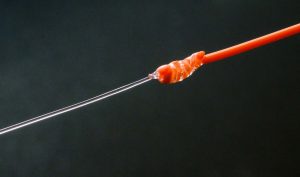Fly fishing is an art form, combining the beauty of nature with the precision of technique. Among the many skills required for successful fly fishing, tying strong and reliable knots is one of the most critical. The connection between your leader and main line is where your hard work on the water can either pay off or unravel, quite literally. Choosing the right knot for this junction is essential for maintaining line strength, ensuring smooth casting, and ultimately, landing that trophy fish. This guide will explore the best leader to line knots for fly fishing, with a focus on ease of tying, strength, and versatility.
The leader-to-line knot is the critical connection point between your fly line and the leader or tippet. A weak or poorly tied knot can result in break-offs, lost flies, and missed opportunities. On the other hand, a well-tied knot will maximize the line’s strength, improve casting accuracy, and help you maintain control over your fly during presentation. Whether you’re a seasoned angler or a beginner, mastering these knots will enhance your fly fishing experience.

1. Nail Knot
Description: The Nail Knot is a classic and widely used knot in fly fishing. It’s known for its strength, small profile, and ability to connect the leader to the fly line seamlessly.
Why It’s Great:
- Strength: The Nail Knot maintains a high percentage of the line’s strength, making it a reliable choice for connecting the leader to the fly line.
- Smooth Transition: This knot creates a smooth connection that easily passes through rod guides, which is essential for casting distance and accuracy.
- Versatility: The Nail Knot works well with both monofilament and fluorocarbon lines, making it suitable for various fishing scenarios.
How to Tie: The knot is tied by wrapping the leader around a nail or tube and then threading the end of the leader back through the loops. The nail is then removed, and the knot is tightened by pulling on the leader and tag end.
Best Uses: The Nail Knot is ideal for attaching a leader to a fly line, particularly when using floating lines and when a streamlined connection is needed for casting.
2. Albright Knot
Description: The Albright Knot is a versatile and strong knot commonly used to connect lines of different diameters, such as a leader to a fly line. It’s particularly useful when attaching heavy monofilament or fluorocarbon leaders to thinner fly lines.
Why It’s Great:
- High Strength: The Albright Knot is known for its exceptional strength, making it suitable for larger fish and heavier leader materials.
- Durability: This knot holds up well under pressure, providing confidence when fighting strong fish.
- Flexibility: It’s effective for both fresh and saltwater fly fishing, offering flexibility across different fishing environments.
How to Tie: The leader is looped around the fly line and then wrapped back over itself multiple times before passing through the original loop. The knot is tightened by pulling on the leader and the fly line simultaneously.
Best Uses: The Albright Knot is ideal for connecting leaders to fly lines with a significant difference in diameter, especially in situations requiring a robust and durable connection.
3. Loop-to-Loop Connection
Description: The Loop-to-Loop connection is a simple yet effective method for connecting the leader to the fly line. This knot involves creating loops at the ends of both the fly line and the leader and then interlocking them.
Why It’s Great:
- Quick and Easy: This knot is extremely easy to tie and allows for quick leader changes, making it perfect for anglers who need to adjust their setup frequently.
- Strong Connection: The loop-to-loop method provides a strong and secure connection, ensuring that the leader stays attached even under significant stress.
- No Tools Required: Unlike some other knots, the loop-to-loop connection doesn’t require any tools, making it convenient to tie in the field.
How to Tie: Form a loop at the end of both the fly line and the leader. Connect the loops by threading one loop through the other and then passing the leader through its loop.
Best Uses: The Loop-to-Loop connection is perfect for situations where quick leader changes are necessary, such as when switching between different tippet sizes or fly patterns.
ginkandgasoline
Description: The Double Surgeon’s Knot is a simple and effective knot for connecting two lines of similar diameter, such as the leader to the tippet.
Why It’s Great:
- Ease of Tying: The Double Surgeon’s Knot is one of the easiest knots to tie, making it accessible for anglers of all skill levels.
- Strong Connection: Despite its simplicity, this knot provides a strong connection that maintains a high percentage of the line’s original strength.
- Versatile: It’s a versatile knot that works well with both monofilament and fluorocarbon lines.
How to Tie: Overlap the leader and tippet, then make two passes through the loop formed at the end. Tighten the knot by pulling on both ends of the leader and tippet.
Best Uses: The Double Surgeon’s Knot is best used for attaching a leader to a tippet or connecting two pieces of leader material. It’s also useful in low-light conditions when visibility is limited.
Mastering the best leader to line knots is crucial for any fly angler. Whether you’re targeting trout in a mountain stream or saltwater species on the flats, having a strong and reliable knot is essential for success. By practicing these knots and understanding their applications, you’ll be better prepared to handle various fishing conditions and improve your overall fly fishing experience.
Choose the right knot based on your specific needs, and don’t be afraid to practice them until you can tie them with confidence. The right knot can make all the difference between landing your dream catch and telling the story of the one that got away.
Image: ginkandgasoline





